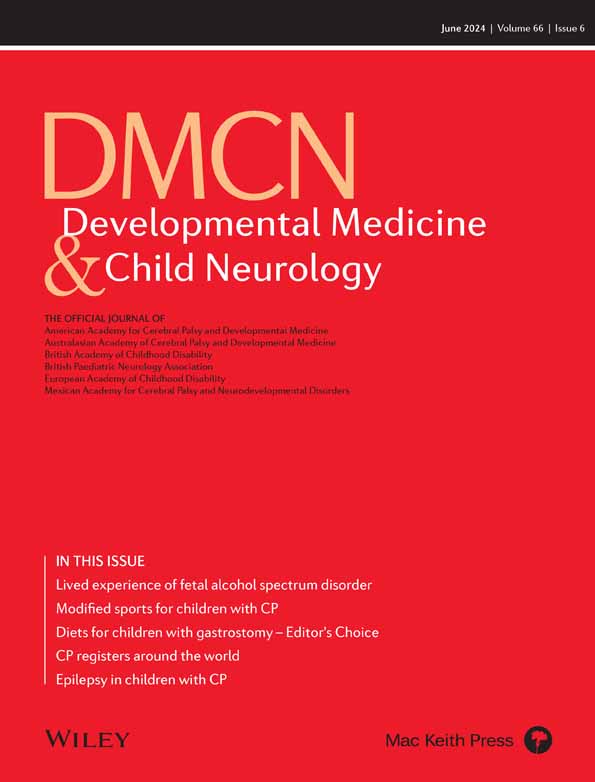Continuity of care and medical complexity in children and young people with cerebral palsy are distinct interrelated concepts
This commentary is on the original article by Paget et al. on pages 733–743 of this issue.
Abstract
This commentary is on the original article by Paget et al. on pages 733–743 of this issue.
Children and young people with cerebral palsy (CP) have higher urgent care use than their peers in the general population,1, 2 which is further increased in patients with lower socioeconomic status (SES) and higher care complexity. Paget et al.3 document an inverse association between continuity of care and urgent care use. In other groups of children with complex care needs, improved care coordination was associated with reduced use of urgent care and health services.4 The inherent complexity of medical needs in children with CP supports the importance of integrated care throughout their lifetime. Socioeconomic factors also play a role in care planning for children and young people with complex medical needs. The effect of medical complexity on CP outcomes, including urgent care use, is likely a complex interplay of compounded patient-specific and systemic factors which include SES and continuity of care.
Paget et al. operationalized continuity of care using the Usual Provider of Care Index (UPCI).3 This metric was developed as a measure of care continuity in primary care; it assigns a ‘usual provider’ – i.e. the primary care physician that is the most seen by the patient – and divides the number of visits with the usual provider by the total number of appointments for that patient.5 The UPCI has been used in studies linking care continuity in primary care with outcomes such as acute-care presentations and unplanned hospitalizations in children with asthma.5 However, the UPCI has not been applied to subspecialized care or specifically to individuals with complex care needs, such as children and young people with CP. Although the UPCI is of potential interest in this population, applying a metric in a new setting warrants additional validation efforts to ensure that it measures the intended construct.
In this study, children and young people with a lower UPCI tended to be those with more complex CP profiles such as those in non-ambulatory Gross Motor Function Classification System levels, or additional non-motor features such as epilepsy and intellectual disability. Children with markers of lower SES also had a lower UPCI. These markers of CP complexity and SES have been shown to increase urgent care use and hospitalizations in children with CP.1, 2 Those with more complex CP typically have increased use of outpatient services since multiple medical and allied health specialists are involved, as is the case in the study by Paget et al.3 To calculate the UPCI, the specialist with the greatest number of outpatient visits with a patient was chosen as the ‘usual provider’ and this number was divided by the sum of all outpatient visits for this individual, regardless of specialty. This approach artificially lowers the UPCI of those who receive care from multiple specialists – often due to the complexity of their medical needs – by inflating the denominator. In this context, is the UPCI simply a reflection of medical complexity rather than care continuity?
The authors partially accounted for this and show that the association between lower UPCI and higher urgent care use remains when restricting the analysis to children with less complex CP profiles.3 Yet, it is unclear whether the association remains in children with more complex CP as well. Further validation is needed to ensure that the UCPI adequately operationalizes continuity of care rather than a more complex and heterogeneous construct. In children and young people with medical complexity, a modified index of care continuity inspired by the UPCI would need to be developed and validated.
Open Research
DATA AVAILABILITY STATEMENT
Not required.




